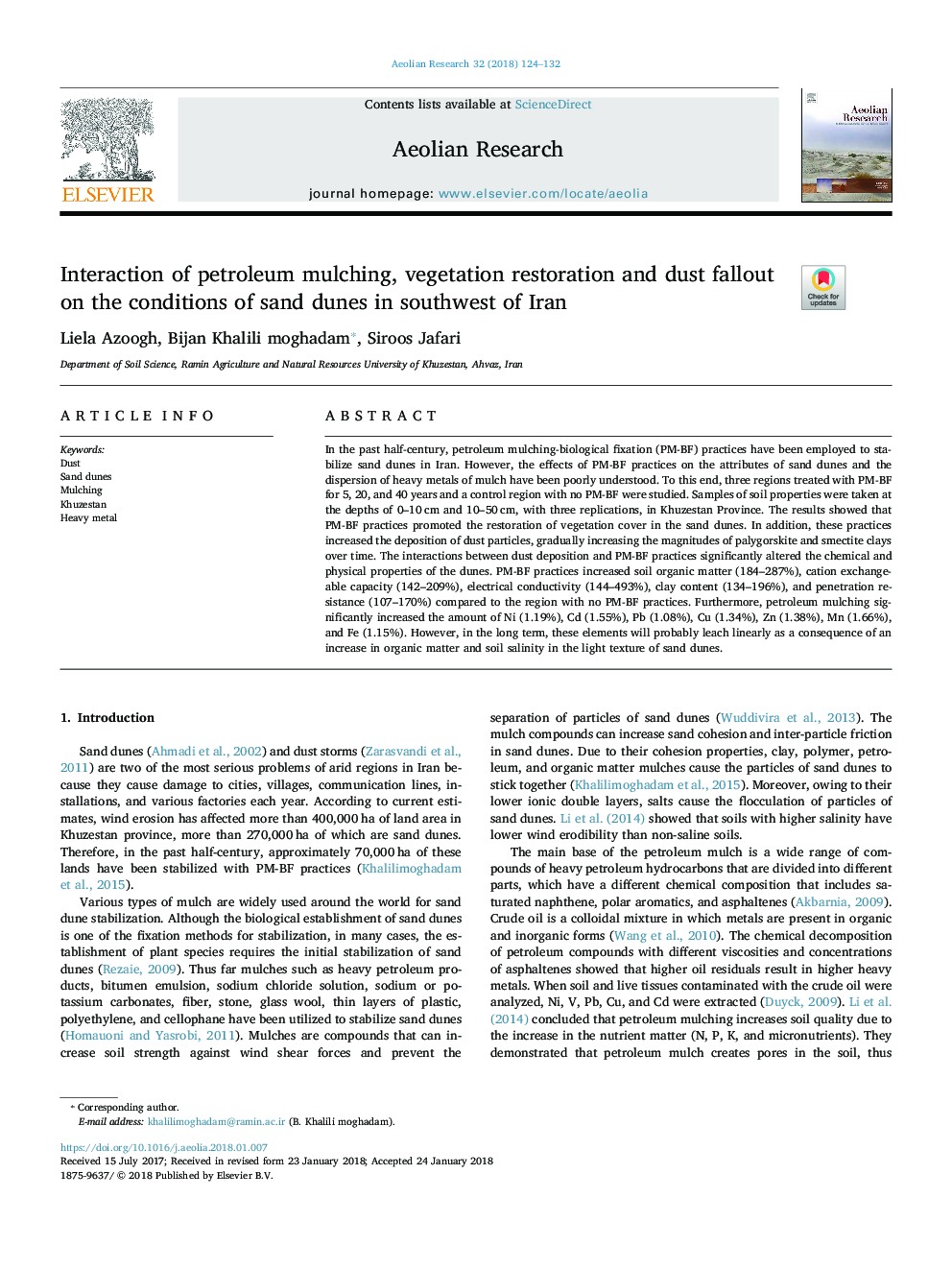| Article ID | Journal | Published Year | Pages | File Type |
|---|---|---|---|---|
| 8906246 | Aeolian Research | 2018 | 9 Pages |
Abstract
In the past half-century, petroleum mulching-biological fixation (PM-BF) practices have been employed to stabilize sand dunes in Iran. However, the effects of PM-BF practices on the attributes of sand dunes and the dispersion of heavy metals of mulch have been poorly understood. To this end, three regions treated with PM-BF for 5, 20, and 40â¯years and a control region with no PM-BF were studied. Samples of soil properties were taken at the depths of 0-10â¯cm and 10-50â¯cm, with three replications, in Khuzestan Province. The results showed that PM-BF practices promoted the restoration of vegetation cover in the sand dunes. In addition, these practices increased the deposition of dust particles, gradually increasing the magnitudes of palygorskite and smectite clays over time. The interactions between dust deposition and PM-BF practices significantly altered the chemical and physical properties of the dunes. PM-BF practices increased soil organic matter (184-287%), cation exchangeable capacity (142-209%), electrical conductivity (144-493%), clay content (134-196%), and penetration resistance (107-170%) compared to the region with no PM-BF practices. Furthermore, petroleum mulching significantly increased the amount of Ni (1.19%), Cd (1.55%), Pb (1.08%), Cu (1.34%), Zn (1.38%), Mn (1.66%), and Fe (1.15%). However, in the long term, these elements will probably leach linearly as a consequence of an increase in organic matter and soil salinity in the light texture of sand dunes.
Related Topics
Physical Sciences and Engineering
Earth and Planetary Sciences
Atmospheric Science
Authors
Liela Azoogh, Bijan Khalili moghadam, Siroos Jafari,
